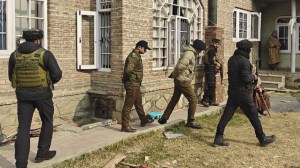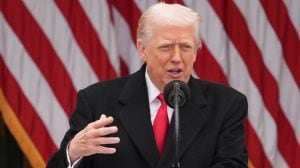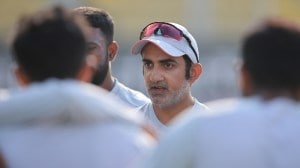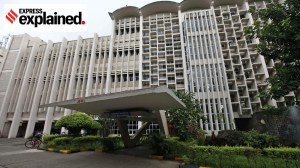This ‘Harry’ stands out from the crowd
A small but recently growing number of Indian-Americans are getting elected in areas where they are the tiniest of minorities

Harvinder Anand, the new mayor of this Long Island village of multimillion-dollar homes, private beaches and yachtsmen, is, like many other residents, a successful business executive, a boater and a connoisseur of world travel. His Sikh turban and beard drew double takes when he moved to the community about 10 years ago, but it does not get many anymore. At least not among the locals.
Nonetheless, Anand’s way of standing out in the crowd of Bermuda-shorts-and-loafer-wearing people who elected him attracted television crews from American and Indian networks to his inauguration. Anand, 47, a New Delhi native, is the first member of any minority group to be mayor of this 95-per cent-white community.
In fact, he is part of what political analysts see as a new pattern: While minority candidates are usually propelled into office from densely populated enclaves of their own ethnic groups, a small but recently growing number of Indian-American office-holders has been getting elected in communities across the nation where they are the tiniest of minorities.
That group is so small that most of its members know each other and many reached out to congratulate Anand on his election. The calls came from Upendra J Chivukula, the New Jersey assemblyman elected in 2002; Jay Goyal, the 26-year-old second-generation Indian-American elected to the Ohio Legislature last year; Nikki Randhawa Haley, a member of the South Carolina House of Representatives since 2004; and Kumar P Barve, the dean of Indian-American elected officials, who won a seat in the Maryland House of Delegates in 1990 and is now the majority leader.
Some are Democrats and some Republicans, but they all share a high level of education and a crossover election appeal. It is a testament to the fact that, compared with other immigrant groups, Indians tend to speak English when they arrive and are ready to assume a place in the middle class.
The Census Bureau counts 2.3 million “Asian Indians” in the US. In Iowa, Ohio, Kansas, Minnesota, South Carolina and Maryland, each of which has sent an Indian-American to its legislature, the Indian-American population is between zero and 2 per cent. Chivukula, a Democrat from Somerset, NJ, represents a district where the Indian- and Pakistani-American population is somewhat higher, at 6 per cent.
United States Representative Bobby Jindal, Republican of Louisiana, a second-generation Indian-American who was elected from a district whose population is 1.5 per cent Asian, narrowly lost his bid for governor in 2003 and recently began a campaign for this year’s election for governor — in a state where Indian-Americans number about 1 per cent of the population.
Ingrid Reed, director of the New Jersey Project, a non-partisan voter advocacy group, said the pattern was probably unique in the history of American immigrants entering the electoral process. But given Indian immigrants’ education and English proficiency, Reed said, they have been less apt to settle in enclaves.
In contrast, Chinese, Japanese and Korean immigrants have largely settled in cities on the East and West Coasts and in Hawaii, which is mostly where they have been elected to public office.
Many Asian immigrants “come from countries where voting is not promoted as a value,” noted Christine Chen, executive director of APIAVote, a non-partisan organization that promotes voting among Americans of Asian and Pacific Island heritage. “Indian-Americans to some extent are different in that, with them, there is the ‘world’s largest democracy’ tradition.”
Indians began to immigrate to the US in large numbers in the late 1960s, after a 1965 federal immigration law lifted quotas that had severely restricted Asians and other non-northern Europeans from becoming legal residents. The law also established rules favoring immigrants with professional skills in science and technology.
The 1965 law made it possible for Anand, the newly-elected mayor here, to immigrate in 1982 upon graduating from Punjab University with a degree in chemical engineering. After post-graduate work at Hofstra University on Long Island, he got a job with a small chemical company, then moved up to a larger company, and in 1995 formed his own company with a partner. It manufactures chemicals in the US, China, India and Thailand.




- 01
- 02
- 03
- 04
- 05



























